Do you know? Weak hip abductors are one of the hidden culprits behind poor posture, lower back pain, and even knee injuries—especially in those who sit all day. Yet, most people skip these vital muscles in their workout routines. That ends today.
If you’re looking to sculpt your hips, improve your posture, and boost your lower body strength without any equipment, mastering bodyweight abductor exercises is a game-changer.
These moves target the outer hip and glute muscles (particularly the gluteus medius and minimus)—essential for balance, stability, and those enviable curves.
Let’s dive into 13 effective, equipment-free exercises to activate and strengthen your hip abductors—right from your living room.
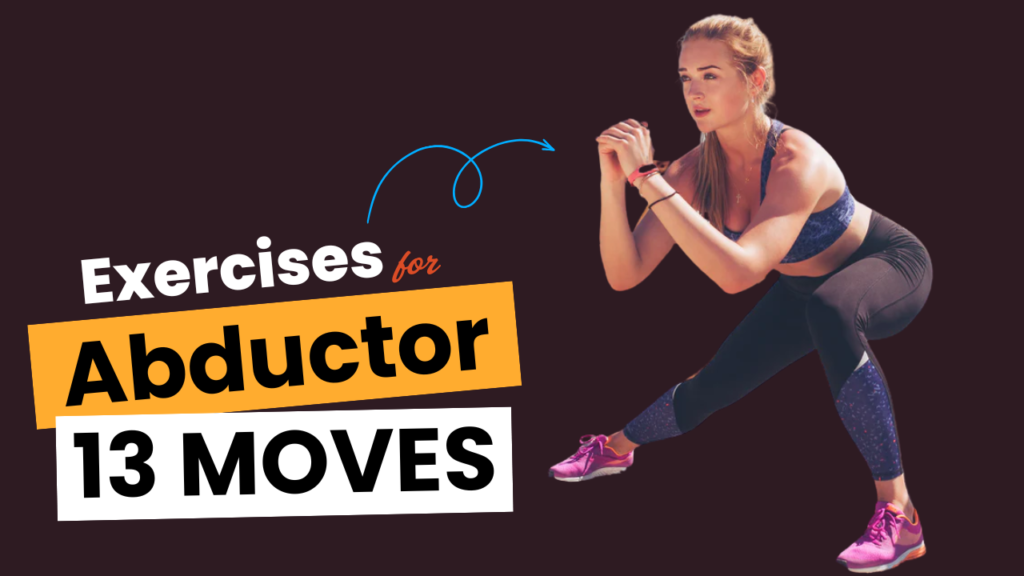
Table of Contents
Results You May See After 30 Days of Bodyweight Abductor Exercises
| Category | What You May Experience |
|---|---|
| Hip Strength | Noticeable improvement in hip stability and control. |
| Glute Activation | Better engagement of the gluteus medius and minimus—especially during daily movements. |
| Hip & Thigh Appearance | Slightly more defined outer thighs and sculpted hips. |
| Balance & Coordination | Improved ability to balance on one leg and perform dynamic lower-body moves. |
| Posture | More upright, aligned posture due to stronger hip support. |
| Mobility & Flexibility | Increased range of motion in hip joints and better leg movement. |
| Pain Reduction | Reduced discomfort in knees, lower back, or hips (especially if caused by weak abductors). |
| Workout Endurance | Ability to perform more reps or sets with less fatigue. |
| Confidence Boost | Greater self-confidence from visible and physical progress. |
| Mind-Muscle Connection | Better control and awareness of how your glutes and hips function during movement. |
Also Read: 10 Forearm Exercises Using Gym Gear That Build Iron Grip & Bigger Arms
Do’s and Don’ts of Bodyweight Abductor Exercises
| Do’s | Don’ts |
|---|---|
| Warm up your hips and legs before starting. | Don’t skip warm-up—it increases injury risk. |
| Focus on controlled, slow movements. | Don’t use momentum to swing your leg. |
| Maintain proper posture and alignment. | Don’t arch your back or lean too far forward/backward. |
| Engage your core during all exercises. | Don’t let your core become passive. |
| Start with beginner-friendly moves like clamshells. | Don’t jump into advanced exercises without building base. |
| Add variety to challenge muscles in different angles. | Don’t repeat the same few moves every session. |
| Breathe naturally—exhale during effort. | Don’t hold your breath while performing reps. |
| Allow time for muscle recovery (1–2 days rest). | Don’t overtrain—fatigued muscles lead to poor form. |
| Use a mirror or record yourself to check form. | Don’t assume your form is correct without checking. |
| Track progress and increase reps gradually. | Don’t rush results or overexert your muscles too soon. |
Also Read: 10 Gym-Only Shoulder Exercises That Maximize Strength & Muscle Definition
1. Side-Lying Leg Raises

How to Do It:
- Lie on your side with legs stacked and straight.
- Support your head with your bottom hand or rest it on your arm.
- Lift your top leg upward to about 45°.
- Lower it back slowly.
Benefits: Strengthens the glute medius, improves hip joint stability, and tones the outer thighs.
2. Standing Leg Abduction
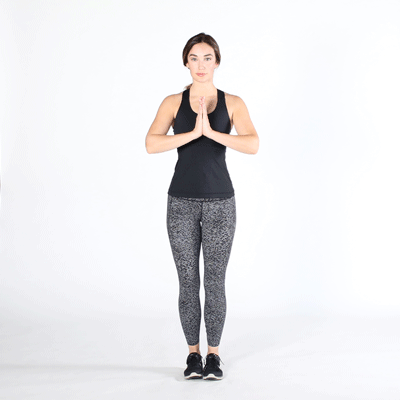
How to Do It:
- Stand tall with feet hip-width apart.
- Shift your weight to one leg.
- Lift the other leg out to the side, keeping your toes pointing forward.
- Lower with control.
Tip: Hold onto a chair or wall for balance.
Benefits: Improves hip strength, coordination, and posture.
3. Fire Hydrant
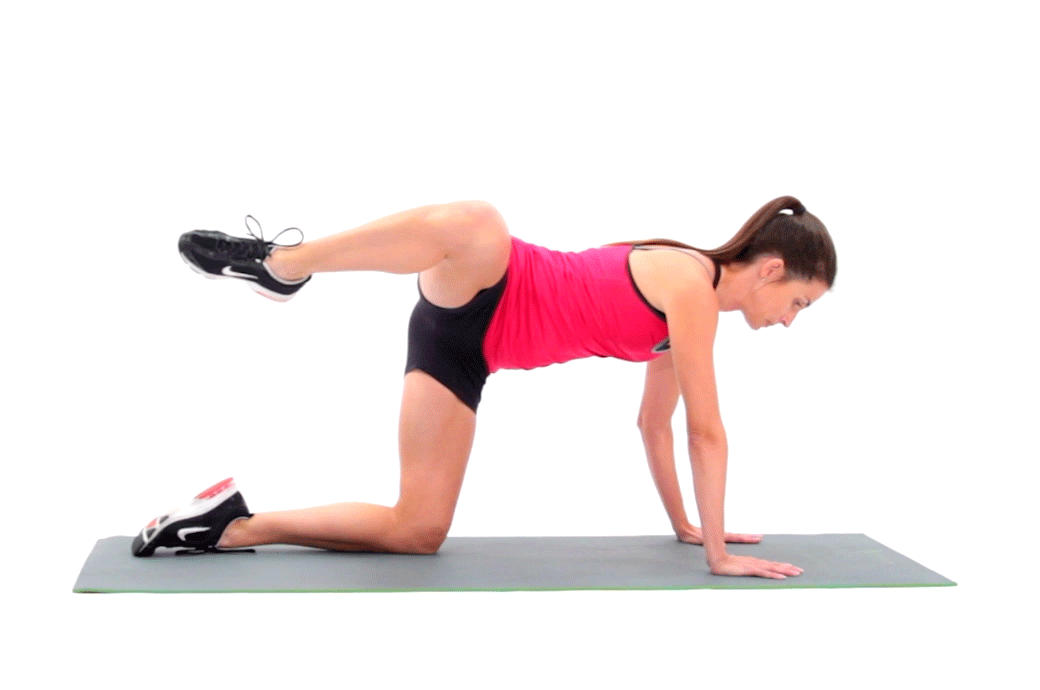
How to Do It:
- Start in a tabletop position (on hands and knees).
- Keeping your knee bent, lift one leg out to the side.
- Lower it back without touching the ground.
Benefits: Targets the glutes and abductors intensely; ideal for hip shaping.
Also Read: The 13 Best Equipment-Powered Glute Exercises for Sculpted Curves
4. Clamshell
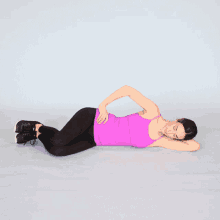
How to Do It:
- Lie on your side with your knees bent and stacked.
- Keep your feet together and lift the top knee while keeping your hips still.
- Lower and repeat.
Benefits: Excellent for activating underused glute muscles, especially the gluteus medius.
5. Side Plank with Leg Lift
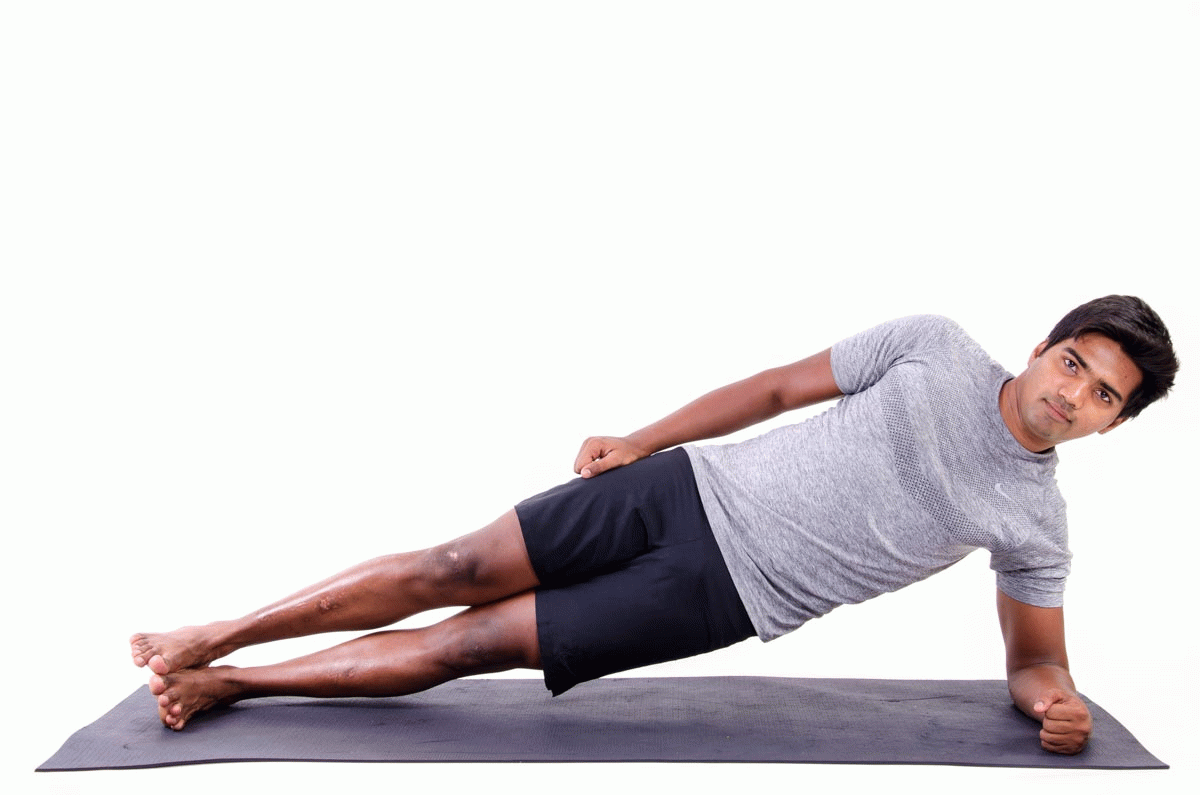
How to Do It:
- Start in a side plank on your forearm.
- Lift your top leg up and hold briefly.
- Lower it with control.
Benefits: Strengthens the core, hips, and shoulders simultaneously.
6. Curtsy Lunge with Kick
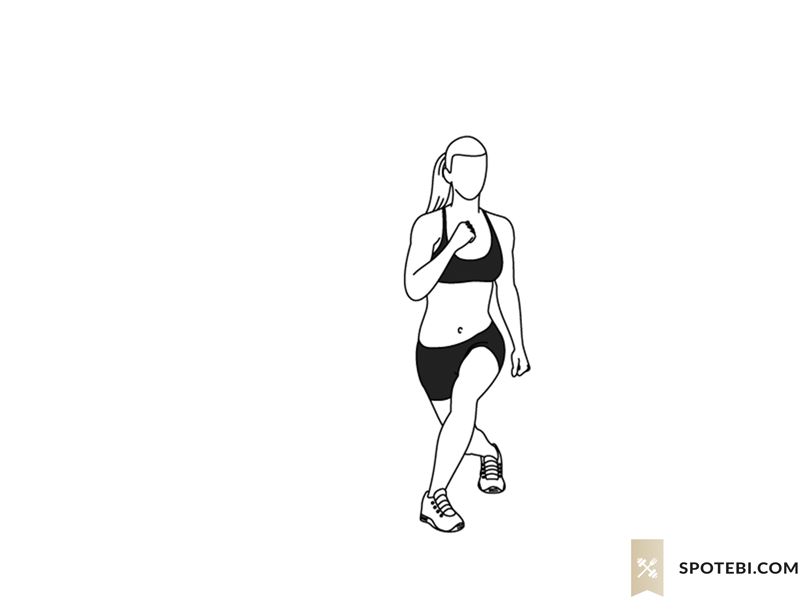
How to Do It:
- Stand tall, then step one leg behind into a curtsy lunge.
- As you rise, kick that leg out to the side.
- Alternate sides.
Benefits: Combines abductor engagement with glute activation and dynamic balance.
7. Lateral Leg Circles (Lying)
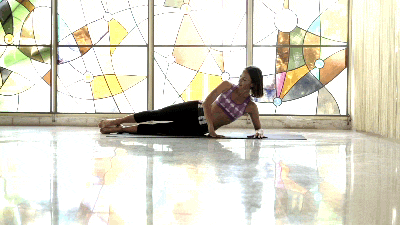
How to Do It:
- Lie on your side, lift your top leg, and draw small controlled circles.
- Switch directions after 10–15 reps.
Benefits: Builds control, endurance, and strength in hip abductors.
Also Read: 13 Best Equipment-Based Quad Exercises For Toned Legs
8. Wall-Supported Side Leg Slide
How to Do It:
- Stand with your back to a wall.
- Slowly slide one leg out to the side, keeping the heel in contact.
- Bring it back in.
Benefits: Great for those new to abductor exercises; helps correct posture.
9. Wide Stance Squats with Pulse
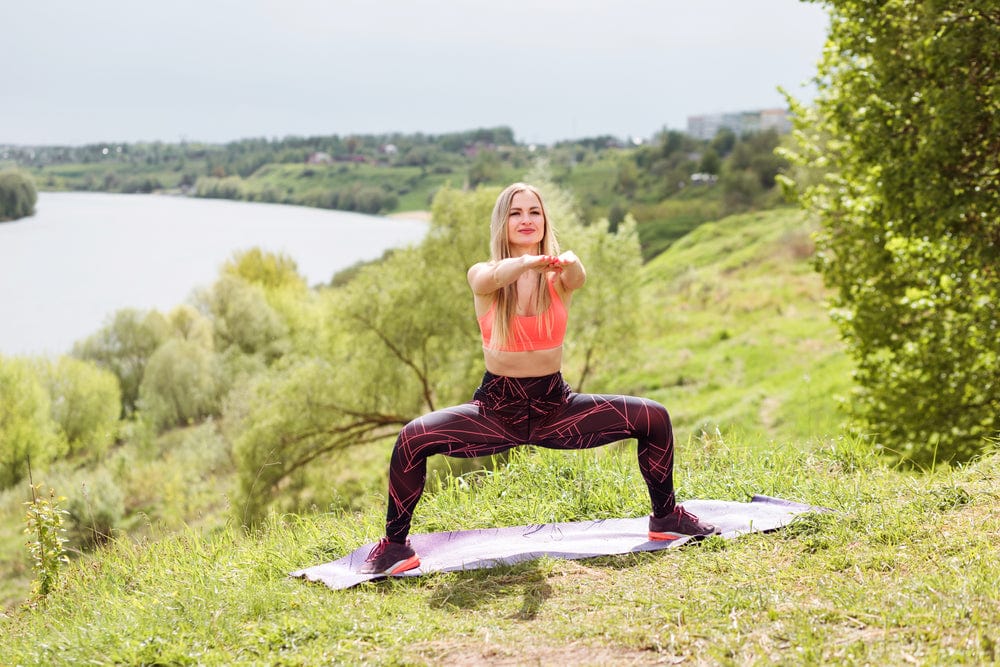
How to Do It:
- Stand with feet wider than shoulder-width, toes slightly out.
- Squat down and pulse at the bottom 2–3 times before rising.
Benefits: Engages glutes, abductors, and thighs together for a sculpted lower body.
10. Side Step Squats
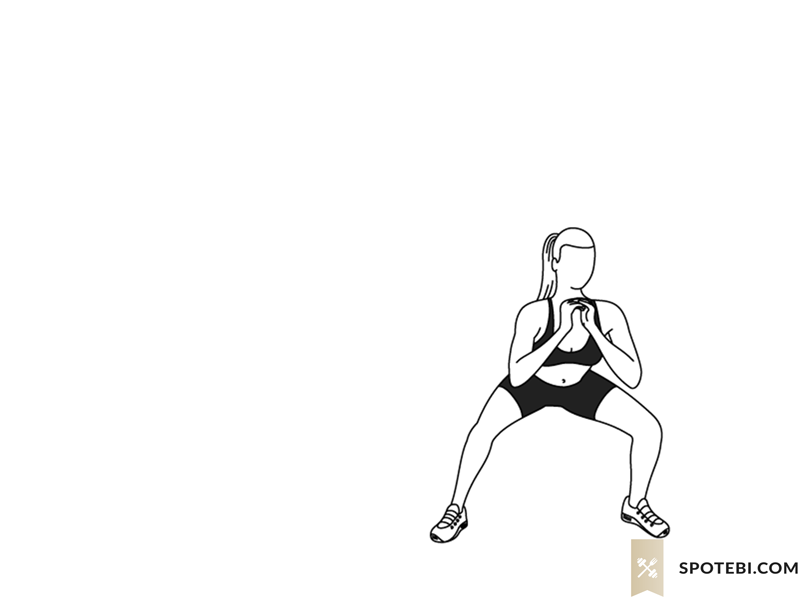
How to Do It:
- Begin in a squat position.
- Step out to the side, then return to the center and repeat on the other side.
Benefits: Dynamic abductor strengthening with glute and quad activation.
Also Read: 10 Equipment-Based Back Exercises to Sculpt a V-Taper
11. Lateral Wall Walk
How to Do It:
- Stand with your back to the wall, knees bent in a half-squat.
- Step side-to-side, keeping tension in your legs.
Benefits: Burns out abductors while reinforcing lateral movement patterns.
12. Standing Knee Drive to Side Kick
How to Do It:
- Stand with one leg stable.
- Drive the other knee up and then extend it out to the side.
- Reset and repeat.
Benefits: Blends abduction with core and coordination work.
13. Glute Bridge with Knee Push-Out
How to Do It:
- Lie on your back with your knees bent.
- Raise your hips into a bridge.
- Push your knees outward, hold, and release.
Bonus Tip: Use a mini band for added resistance later.
Benefits: Fires up glutes and abductors while improving hip stability.
Myth Buster
Myth: “Abductors don’t matter unless you’re an athlete.”
Truth: Everyone—from office workers to runners—benefits from strong abductors. They reduce injury risk, enhance mobility, and even improve walking and sitting posture.
Final Thoughts
Whether your goal is to tone your hips, boost strength, or improve your balance and posture, bodyweight abductor exercises offer an effective and accessible solution. No gym. No excuses. Just real results.
Incorporate a few of these moves into your weekly routine, and your hips will thank you—with strength, stability, and sculpted curves to show for it.
Frequently Asked Questions (FAQs)
What are hip abductors, and why are they important?
Hip abductors are muscles located on the outer side of your hips and thighs, including the gluteus medius and minimus. They help move your leg away from the midline of your body and play a crucial role in stabilizing your pelvis, improving balance, and preventing injury.
Can I do abductor exercises every day?
You can perform light abductor movements daily, especially if you’re focused on mobility and activation. However, for muscle strengthening and toning, 2–3 times per week with rest days in between is ideal to allow recovery.
Will abductor exercises make my hips wider?
These exercises can enhance the shape and tone of your hips by strengthening and building the outer glute muscles, which may create the appearance of slightly wider or more sculpted hips depending on your body type.
Do I need equipment for abductor exercises?
No, all 13 exercises listed in the guide are bodyweight-only. However, you can add resistance bands or ankle weights later to increase intensity as you progress.
How long does it take to see results from abductor exercises?
With consistent workouts (2–3 times per week) and a balanced diet, you may start noticing improvements in strength and shape within 3–4 weeks. Visible toning may take 6–8 weeks depending on individual factors.
Are these exercises suitable for beginners?
Absolutely. The majority of the exercises, like side-lying leg raises and clamshells, are low-impact and beginner-friendly. Always focus on proper form before increasing reps or adding intensity.
Can abductor exercises help reduce hip dips?
While you can’t completely change your bone structure, strengthening your glute medius and surrounding muscles can reduce the appearance of hip dips by adding volume to the outer hip area.
What’s the difference between abductor and adductor exercises?
Abductor exercises move your legs away from your body’s center (think outer thighs), while adductor exercises pull them inward (inner thighs). Both are important for balanced leg and hip strength.
Is warming up necessary before doing these exercises?
Yes, always start with a light warm-up (like marching in place, leg swings, or bodyweight squats) to increase blood flow, loosen joints, and prevent injury.
Can I combine abductor exercises with other lower body workouts?
Definitely. These moves work well with glute, quad, and hamstring routines. You can mix them into full leg day workouts or add them as activation drills before heavy lifting.










